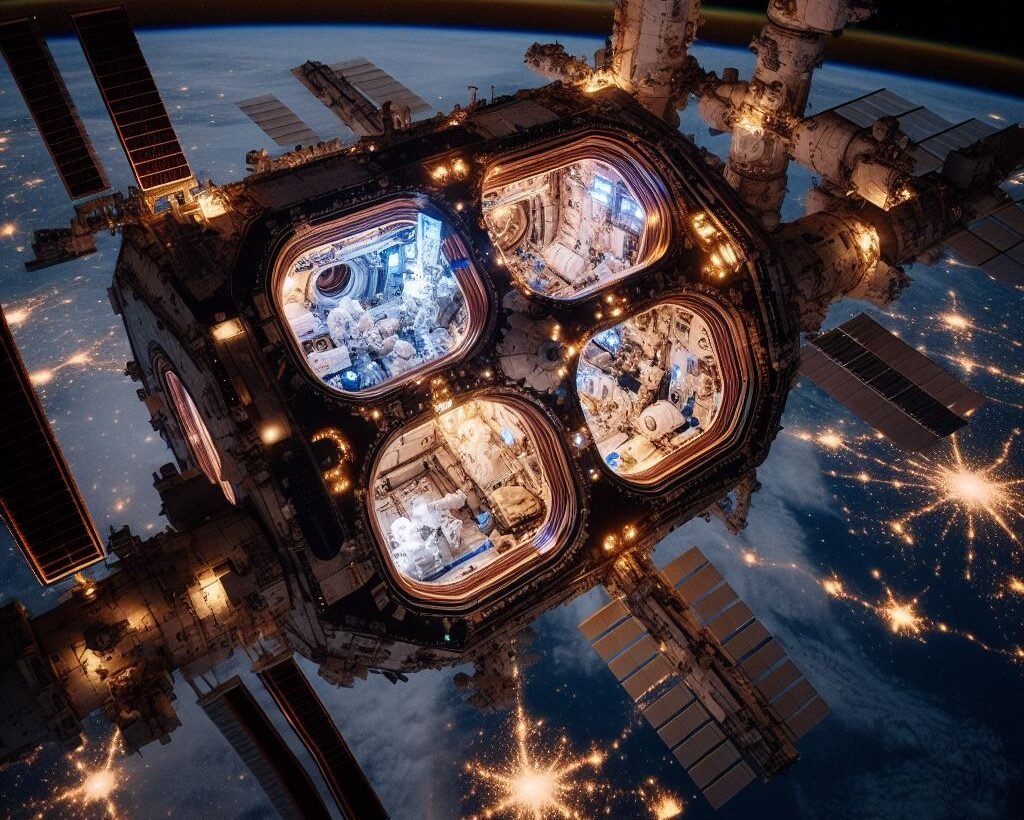As humanity reaches further into the cosmos, the quest for sustainable and reliable energy sources becomes paramount. Among the myriad options, solar power, particularly through the use of solar panels in space, stands out as a beacon of hope and innovation. This clean, endlessly renewable solar energy source has not only revolutionized how we approach Earth-based energy challenges but also become a critical component in the exploration and colonization of space.
Renewable and Sustaining
The nature of solar power as an infinitely renewable resource offers a profound advantage for space exploration. Solar power offers an unlimited electricity supply with sunlight exposure, crucial for long-term missions to outer planets or deep space observatories. Solar panels allow spacecraft to operate longer and travel farther, expanding our scientific and exploration capabilities.
Lightweight and Efficient

In space travel, every gram counts. The cost of launching additional weight into space can be prohibitive, making the lightweight nature of solar panels incredibly valuable. These devices are not only light but also boast impressive efficiencies in converting sunlight to electricity. Modern photovoltaic technology enables smaller, powerful solar arrays that meet spacecraft energy needs without adding excessive weight. This efficiency is crucial for designing cost-effective, capable spacecraft, allowing more space for scientific instruments or extra payload.
Sustainability in the Vacuum of Space
In the harsh, unforgiving environment of space, the sustainability of technology is non-negotiable. Solar panels are particularly suited to space missions due to their clean operation—producing no emissions or waste. This aspect is crucial when considering missions that aim to explore and study celestial bodies without contaminating them. Preserving the pristine environments of planets and moons ensures that collected scientific data is pure and accurate, offering true insights into the cosmos.
Widespread Usage
The practical applications of solar power in space are already well-established. Satellites, whether for communication, weather monitoring, or Earth observation, rely extensively on solar power. Space telescopes like the Hubble rely on solar panels for continuous power, enabling them to send back valuable data and images of the universe. This consistent energy supply allows these spacecraft to operate continuously for years.
Powering Exploration on Mars

The exploration of Mars showcases the critical role of solar power in supporting surface missions. Rovers like Spirit, Opportunity, Curiosity, and Perseverance have all utilized solar panels to traverse the Martian landscape. These panels provide the necessary power for movement, data collection, and communication back to Earth. The success of these missions is largely due to the reliable and efficient solar technology, which allows rovers to conduct extended operations in harsh conditions.
Deep Space Missions
Beyond the confines of near-Earth space, solar power remains a vital ally. The Voyager probes, launched in the late 1970s, continue to communicate with Earth even as they travel through the outer solar system and beyond, thanks to their solar arrays. These missions underscore the adaptability and durability of solar power, even in the diminishing sunlight of deep space.
International Space Station (ISS)
The International Space Station (ISS), largely powered by solar panels, supports everything from life support to scientific experiments, underscoring solar power’s role in sustaining human presence in space.
Facing the Challenges
Despite its many advantages, solar energy in space is not without its challenges. The intensity of sunlight decreases with distance from the Sun, reducing the power available to spacecraft in deep space. Dust accumulation on panels, especially on bodies like Mars, which can reduce efficiency, while extreme temperature variations challenge the durability and functionality of solar technology.
Future Innovations
Looking forward, the potential of solar power continues to expand. Concepts like solar sails could revolutionize propulsion, eliminating the need for conventional fuel and enabling lighter, faster spacecraft. Advanced materials and designs for solar panels promise even greater efficiencies and capabilities, potentially supporting human bases on the Moon and Mars.
In conclusion, solar power is essential for sustainable space exploration due to its reliability and efficiency. As we aim for distant worlds, continued improvements in solar technology will be key to advancing human presence beyond Earth.






